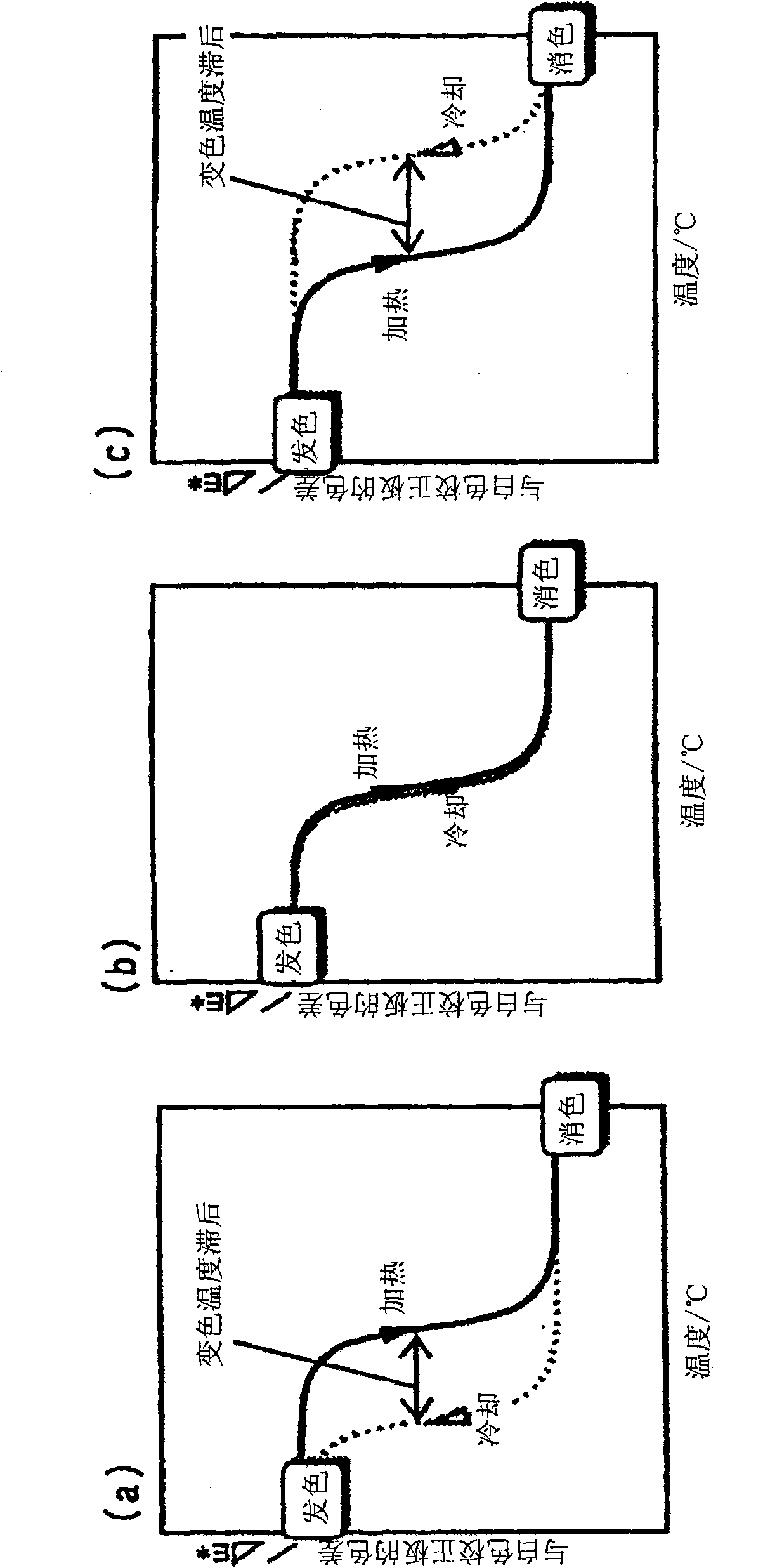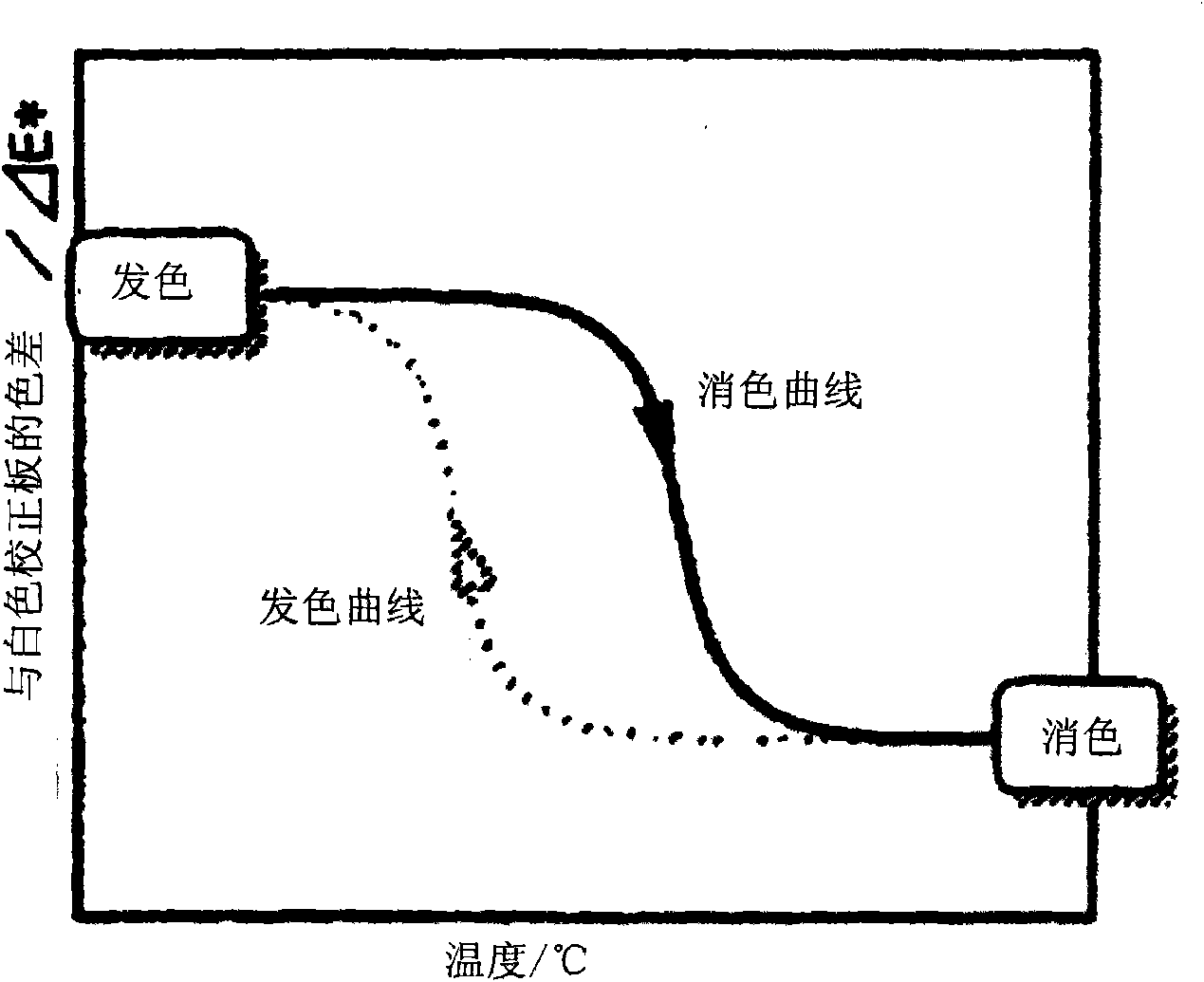Thermochromic composition and thermochromic microcapsules
A composition and thermochromic technology, applied in the direction of color-changing fluorescent materials, chemical instruments and methods, etc., can solve the problems of the temperature difference between color development temperature and achromatic temperature, and achieve large color-changing color difference, clear color-changing behavior, and high color-changing color difference. Effect
- Summary
- Abstract
- Description
- Claims
- Application Information
AI Technical Summary
Problems solved by technology
Method used
Image
Examples
Embodiment 1~14 and comparative example 1~4
[0134] While heating each component shown in Table 1 at 120-180 degreeC, it mixed uniformly with the stirrer, and prepared each thermochromic composition.
[0135]
Embodiment 15~25 and comparative example 5~7
[0137] Using the materials shown in Table 2, the thermochromic compositions obtained in Examples 2-4 and 7-14 and Comparative Examples 5-7 were microencapsulated. Table 3 shows the corresponding relationship of the thermochromic composition.
[0138] First, the main resin agent (main raw material) and the thermochromic composition as the capsule wall film are uniformly mixed and dissolved using a dissolution aid (solvent) to obtain a solution. Next, the above-mentioned solution was added to the emulsifier aqueous solution heated at 30 to 60° C., while performing medium-shear stirring. Next, by performing high-shear stirring, an O / W emulsion (particle diameter of droplets: about 5 μm) was obtained from the above solution. Then, switch to low-shear stirring, and add a crosslinking agent aqueous solution dropwise to the above-mentioned O / W emulsion. After reacting at a temperature of 60-90° C. for 3-12 hours, cool to room temperature to obtain a slurry in which microcapsules ar...
Embodiment 26~4l
[0145] In the microcapsules of Example 18 (ie, the thermochromic composition of Example 7), the color formers were changed as shown in Table 4.
[0146]
PUM
| Property | Measurement | Unit |
|---|---|---|
| Particle size | aaaaa | aaaaa |
Abstract
Description
Claims
Application Information
 Login to View More
Login to View More - R&D
- Intellectual Property
- Life Sciences
- Materials
- Tech Scout
- Unparalleled Data Quality
- Higher Quality Content
- 60% Fewer Hallucinations
Browse by: Latest US Patents, China's latest patents, Technical Efficacy Thesaurus, Application Domain, Technology Topic, Popular Technical Reports.
© 2025 PatSnap. All rights reserved.Legal|Privacy policy|Modern Slavery Act Transparency Statement|Sitemap|About US| Contact US: help@patsnap.com



